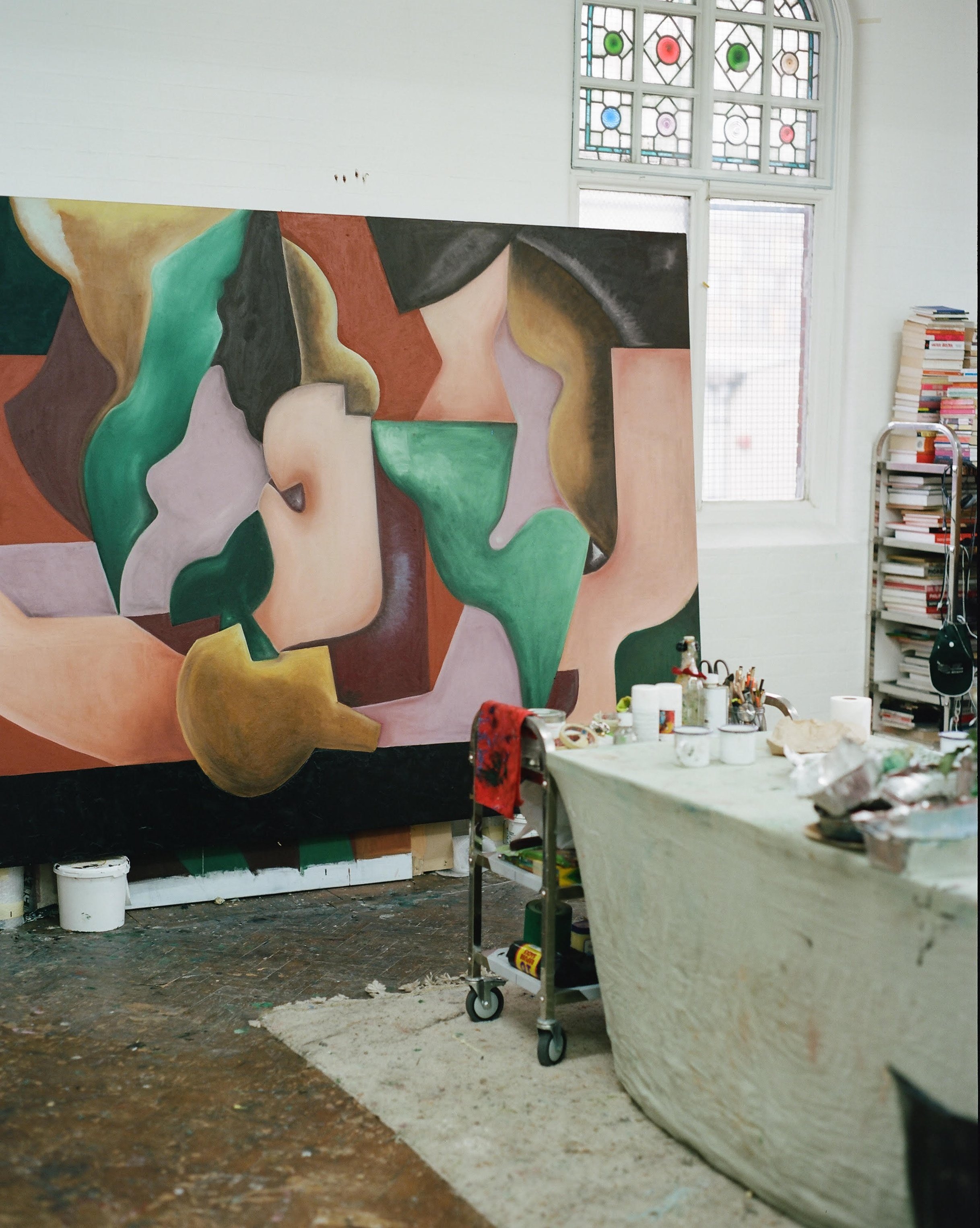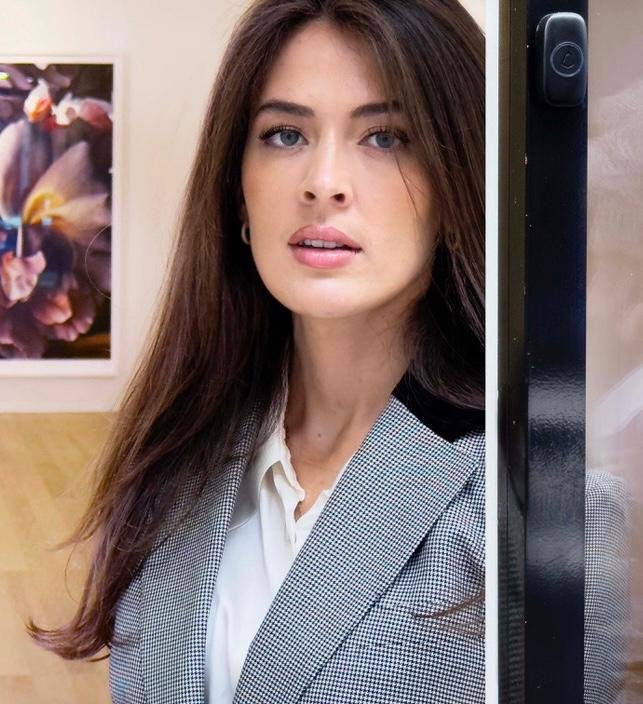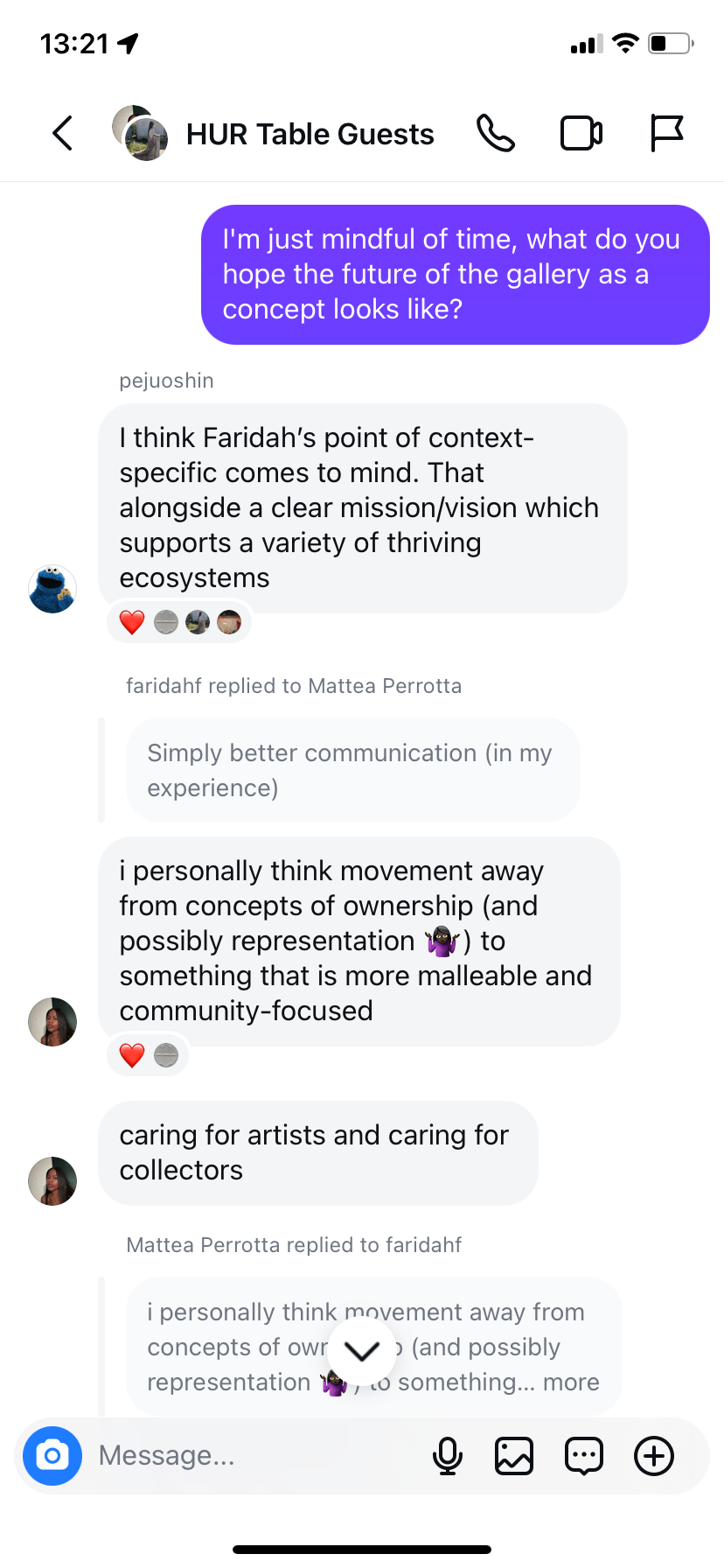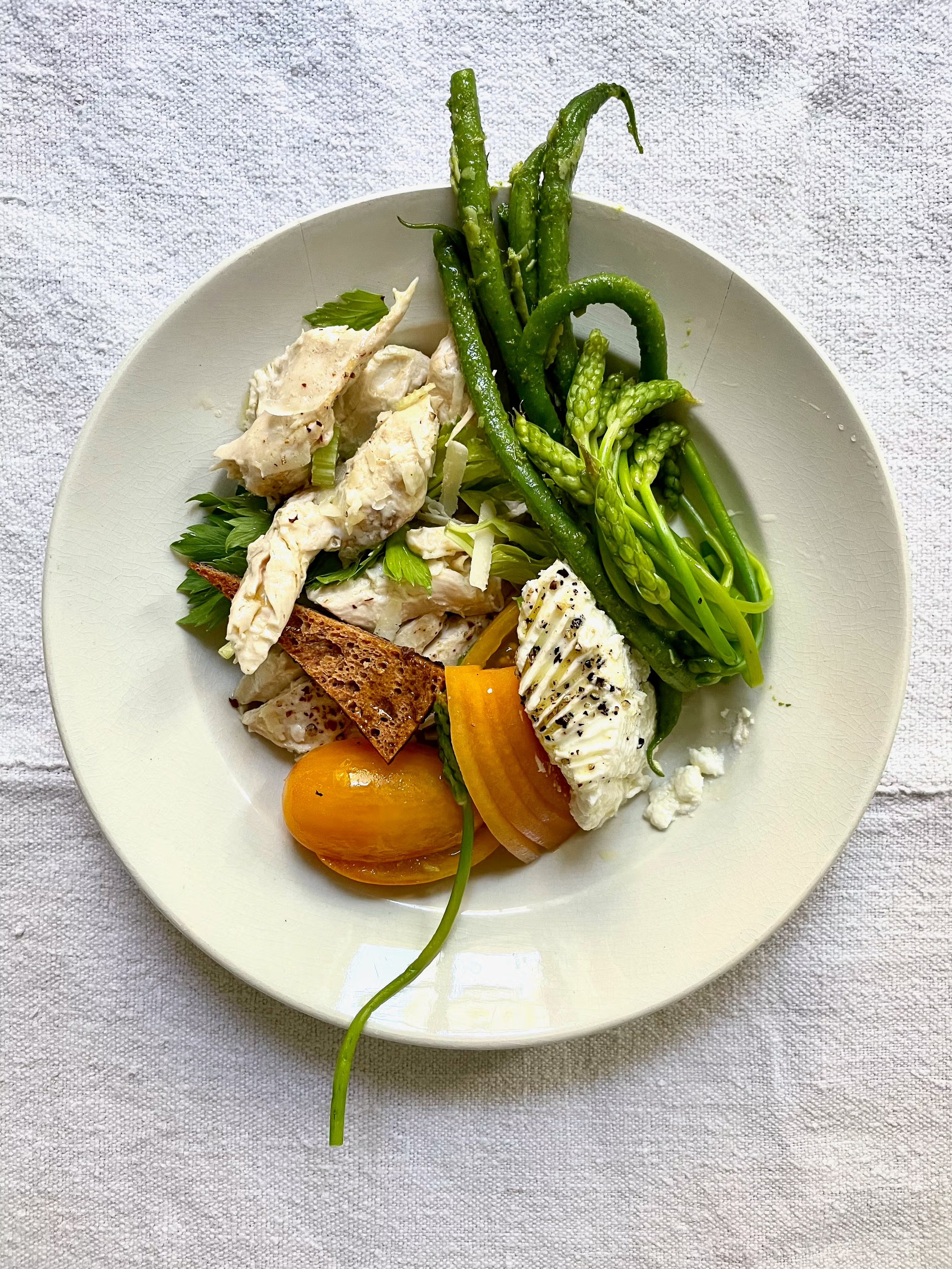Who Rules the Art World in the Instagram Age?
Courtesy of Mattea Perrotta
Who Rules the Art World in the Instagram Age?
Mattea Perrotta, Lucca Hue-Williams, Faridah Folawiyo and Péjú Oshin
By HURS team
Radical change and the art world are two concepts rarely found in the same sentence. While many of the structures in which the industry currently exists have been shaped by challenging the status quo, it seems today those running it prefer tradition over innovation. But they’re no longer the ones deciding. While social media isn’t new, it is continuously shifting the power across industries. And with it, dismantling the traditional structures on every level of the art ecosystem.
Through their curatorial point of view, art galleries used to hold the position of tastemakers – or gatekeepers – dictating what was deemed relevant or worthy of exhibiting. While collectors, visitors and art enthusiasts still look for a filter through which to experience art, the role of the gallery has been hugely impacted by social media. They’re no longer the sole curators on what gets to be seen and sold. And buyers and artists no longer have to rely on the traditional systems to connect. Opening up the market to those who historically were unable to participate. For artists, this shift is a blessing and a curse. The agency to build direct relationships with collectors, brands, galleries and institutions and the ownership of their following comes with a freedom and independence to grow their career on their terms. Through social media, self representation suddenly became a reality. According to Artsy’s 2023 Trends Report, 44 percent of galleries now meet or discover new artists through Instagram. But the pressures of building an online presence and the need to continuously create virality can limit how artists get to develop their creative practice. Exploring your own narratives while being exposed to the direct feedback loop from social media isn’t necessarily the most fertile ground for self-expression.
While social media democratized in many ways, it hasn’t fundamentally changed the art world. Those embracing connecting and building a presence online risk being judged as frivolous, or not being taken seriously by the establishment due to not conforming to how things used to be done. While those who dismiss a hybrid art world completely, miss an opportunity to connect with a new generation of artists, collectors and galleries. How can the diminishing of the existing power structures allow galleries, collectors and artists to redefine the future of the art world?
MATTEA PERROTTA
Artist Mattea Perrotta lives and works in Naples, Italy. Her work has been exhibited in solo presentations at AnnaRumma in Napoli, Praz-Delavallade in Los Angeles, Et. al in San Francisco, Haverkampf Leistenschneider in Berlin, Lamb Arts in London, and MAMA Gallery in Los Angeles, Madrid and Mexico City. She has been involved in group exhibitions in Torino, Istanbul, London, Lima, São Paolo, Mexico City, and Bogotá. She holds a BFA from UC Berkeley and has been an artist in residence at the American Academy in Rome, The Porthmeor Artists Residency Programme in St. Ives and Al Maqam Residence in Marrakech.
LUCCA HUE-WILLIAMS
Lucca Hue-Williams is Founder and Director of Albion Jeune. Holding a Bachelor and Master's degree in Art History from the Courtauld Institute of Art, London, she has a particular interest in Contemporary Chinese Art and Geopolitics. Her diverse experiences have seen her working across the globe and throughout various verticals of the art industry. Early in her career, Lucca gained formative insights into the intersection of art, design, and fashion at institutions such as Cai Guo-Qiang, Tom Ford, and Marc Newson. She also conducted research and assisted curatorially at UCCA, Beijing, and the inaugural Diriyah Biennale, The Kingdom of Saudi Arabia. Hue-Williams’ understanding of the art market was further deepened working with Christie's Auction House. She grew up around artists, curators, and collectors through her work and family business, Albion Barn and Fields.
FARIDAH FOLAWIYO
Faridah Folawiyo is an independent curator and researcher with a focus on contemporary art from the Black world. She received her undergraduate degree in Near Eastern Studies from Princeton University and holds a Masters in History of Art from the Courtauld Institute of Art. Her recent curatorial work includes an upcoming exhibition entitled Elastic Visions at Efie Gallery for the occasion of Dubai Art Week (March 2024); Image Impressions at the Vaughan-Richards House in Lagos, Nigeria (November 2023); the independently produced Manifold (November 2022), and its follow up Manifold (Deluxe) at Frieze No. 9 Cork Street (April 2023). She has written for publications such as Mousse Magazine, Nka Journal, TSA Art Magazine, Service95; and has been featured in the likes of Vogue, NPR, Wallpaper Magazine, Native, Sotheby’s, and HURS.
PÉJÚ OSHIN
Péjú Oshin is a British-Nigerian curator, writer and lecturer based in London. Her work sits at the intersection of art, style and culture with a focus on liminal theory through working with visual artists, brands and people globally. Oshin held the position of curator of the Young People’s Programme at Tate Modern before her current position as Associate Director at Gagosian. Oshin’s unique ability to connect people to art and culture through her work with artists, archives and cultural institutions have made her one of the key contributors to London’s thriving art scene.
We asked four experts for their take on the purpose of galleries today, the existing power structures between galleries, collectors and artists and how social media impacts the art world.

























